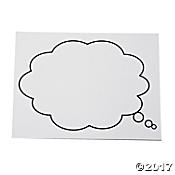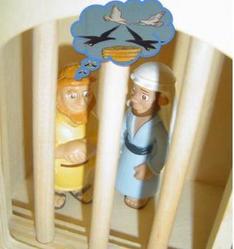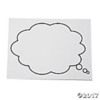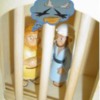Thought Bubble Dry Erase Boards
I just came across these at orientaltrading.com and thought how fun they would be in drama workshops for things like: "Freeze" scenes or "Story Table" scenes. They have since gone out of print, but why not draw one on paper and photocopy, the kids can write/draw on them, they just won't be reusable (wipe-able). Where I would use them, see below:
Kids could prepare and hold up a speech bubble - of what their disciple was possibly thinking at that moment. Just imagine what one of these disciples in the background were thinking. What was Jesus thinking as he washed Peter's feet?
Story Table Workshop
When we did the dreams in  Joseph's story the kids photographed flannel graph pieces to represent each dream and then photographed the scene, without the dream.
Joseph's story the kids photographed flannel graph pieces to represent each dream and then photographed the scene, without the dream.
It was a lot of work and steps (in Word and Kid Pix) for me to take the dream bubble picture they took and turn it into what you see pictured.
I'm thinking having them draw the dream on the large "Thought Bubble" and including it in their scene shot, might not be as pretty, but would be easier for me, more memorable for the kids, plus more busy hands for the prop/scene setters assigned for that dream.
Luanne




